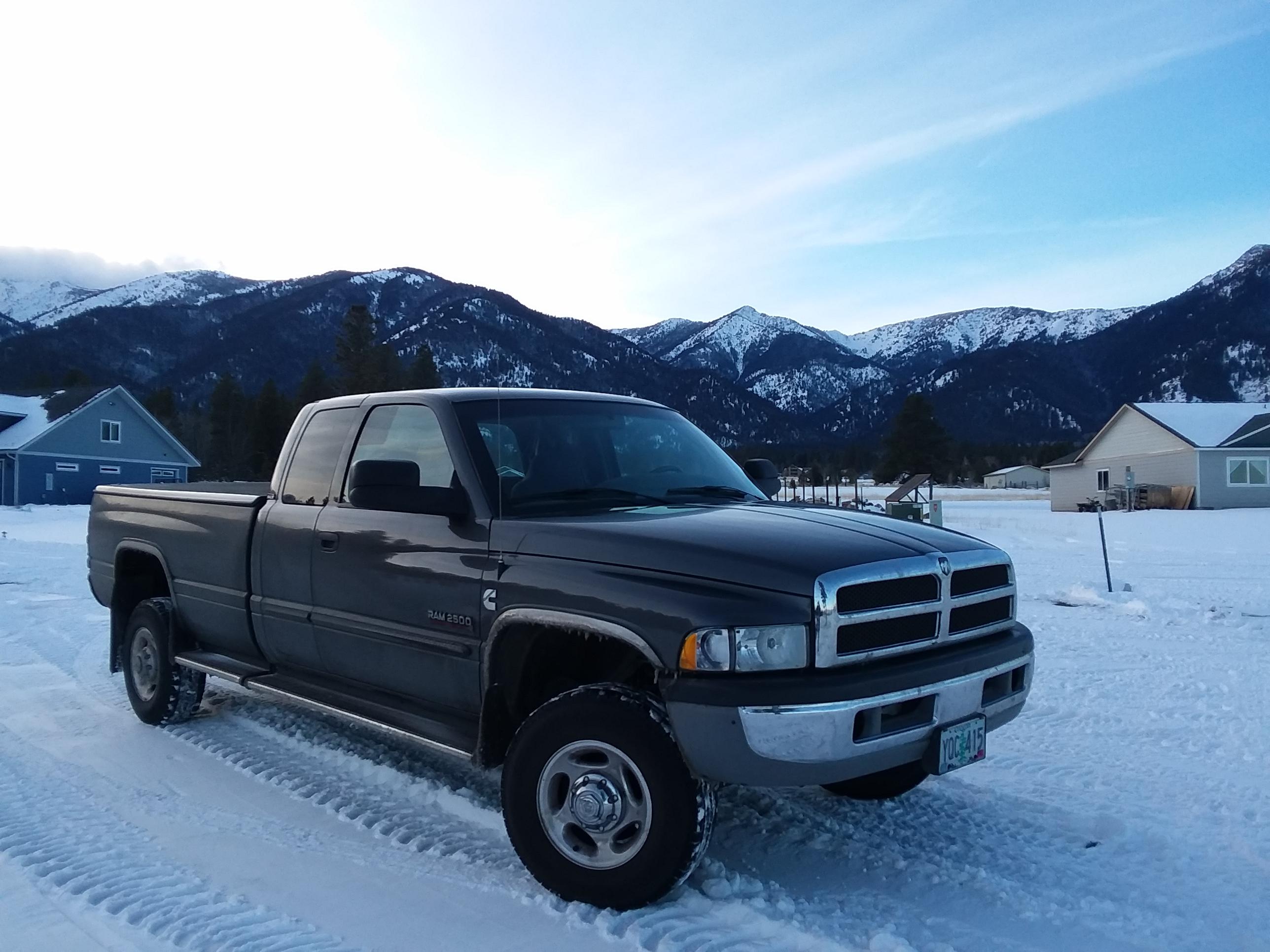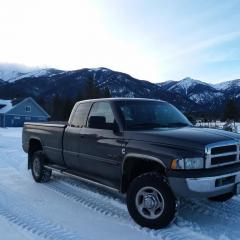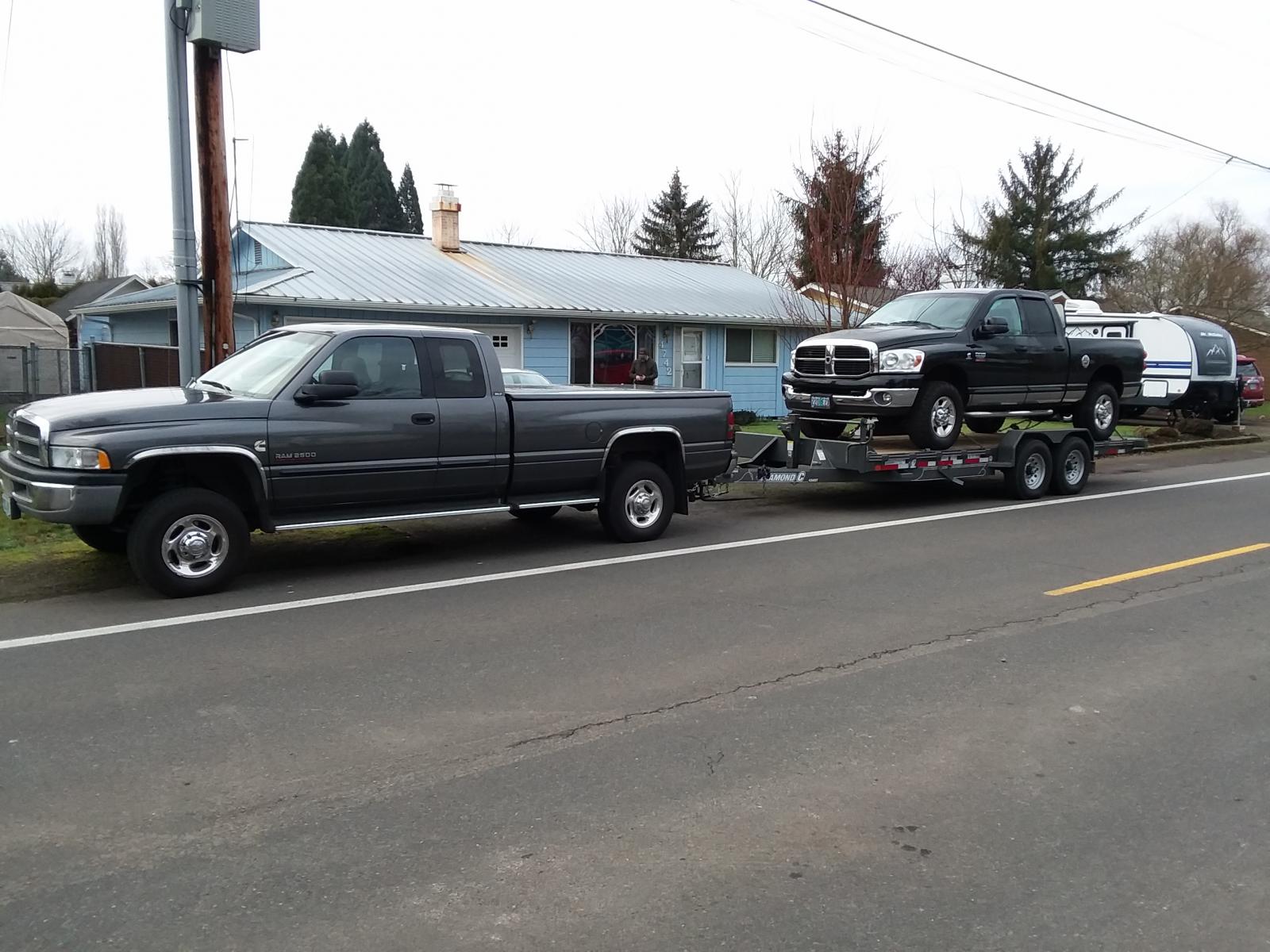
Everything posted by Tractorman
-
High Pitched "Cricket" Buzz
Don't rule out a boost leak. I have heard boost leaks that have a reed sound (like in a musical instrument). In two cases the cause was a broken hose clamp and the reed-like sound was coming from the vibrating hose end under certain boost conditions. Some of the symptoms you have described could match that of a boost leak. - John
-
P0336 / ECM trouble beyond standard troubleshooting
Your perseverance in tracking down the correct solution without getting sidetracked is nothing short of amazing! Excellent troubleshooting! And thank you for the clarity in explaining your diagnostic steps along the way. - John
-
Borgeson Steering shaft upgrade
A few years ago I installed a Borgeson steering shaft and a Borgeson steering box and no modifications were necessary. From what I recall, if a Borgeson box was installed on an OEM shaft, then a flat spot needed to be ground on the adapter that came with the Borgeson steering box (no grinding on the steering box input shaft). Do you have an OEM steering box with the flat spot on the shaft? If so, I think you can just install the Borgeson steering shaft. Note: Check the operation of the slip yoke on the Borgeson shaft before installation. It must slide easily! If it does not you will have hard to diagnose steering problems and set screws will come loose. Believe me, this is true - it took me 25,000 miles of driving to figure it out. - John
-
9004 to 9007
I believe a standard 9004 bulb is 45/65 watts. I never thought that a non-relayed headlight circuit accompanied with long runs of undersized wiring and topped off with a super powerful 45 watt low beam bulb was a very bright idea to light up the road. - John
-
DAP Injector Upgrade 7 x 0.010 @ 320 Bar
This has been an interesting read. @pepsi71ocean, I agree with @Mopar1973Man in that timing rattle is easily detected audibly when timing is advanced with the Smarty S03 to the T3 and especially the T4 setting. The difference doesn't seem to be noticeable at idle, but once you get moving it is very noticeable, even after the engine has reached operating temperature. It is most noticeable (and annoying) under light to moderate throttle. Over the years I have done a few things to help quiet engine noise and as a result I can easily hear excessive timing rattle. When I had my stock injectors I ran timing at T1, and now with the RV275's I have experimented and it looks like I will stay with T2. With T2, performance and fuel economy are good with no timing rattle. In about two weeks I will be taking the travel trailer to Crescent City - this will be the first long towing trip (GCVW at 12,500 lbs) with the RV275 injectors. - John
-
Dead truck P0216
You will have to set me straight here. I have a 20 foot tilt-deck trailer rated at 14,000 lbs GVWR. It's empty weight is about 3,000 lbs (maybe 3,500 lbs max). Are you saying your trailer weights 7,000 lbs empty? - John
-
Sport Headlight Conversion Kit and Raffle
A new market - Headlight Heaters! Maybe a low wattage incandescent bulb will make its way back into the headlight housing to melt snow and ice. That would be funny. - John
-
0216 Injection timing control
I drove mine for over a year and 23,000 miles with the 0216 code. The problem started at 64,000 miles on the OEM pump and as time went on the engine went into limp mode more frequently and finally on every trip. But, I learned how to drive around the limp mode feature until I got the VP44 pump replaced. As @JAG1 mentions, two-stroke oil may help you along with a warm up in weather, at least until you can budget for a replacement VP44. - John
-
Sport Headlight Conversion Kit and Raffle
My original OEM headlights were singe bulb (9004) with the fluted lens. I relayed those light right away so I could get my 45 watt's worth on low beam and I drove the truck for a few years until the lenses began to discolor and get cloudy. Then, for three or four years I tried different junk internet lights. I confirmed they were junk. Finally, in 2016 (50,000 miles ago), I installed my current sport headlights with aftermarket housings and clear lenses. There is room for improvement, but with Danie Stern's recommended halogen bulbs, they work far better than any previous headlight. Last summer I was able to locate and install a new (the last one in the U.S., I think) OEM right sport headlight housing and lens - I cannot find an OEM left one. Because the optics in the sport headlights that I have (one being an OEM) are satisfactory and do put light on the road where it should be, I am interested in finding an LED bulb that will be an improvement and give me a few more years with my current headlight housings and lenses. - John
-
Sport Headlight Conversion Kit and Raffle
I have been watching and reading about the LED after market headlight bulbs for a few years now. Up until very recently there had been no attempt to build an LED bulb to mimic the properties of a halogen filament bulb and that is why the light is scattered so badly - and it doesn't matter whether you have reflector housings or projector housings. There have been some significant improvements with LED bulbs just within the past year and some manufacturers are paying attention to the optics and as a result there are some much improved LED bulbs on the market. Some work better in projector housings and some are better with reflector housings. The LED bulb may have a ways to go, but in my opinion they are improving rapidly. The 9007 LED bulb that I am using currently has not received a single flash from oncoming traffic while on low beam and there have been plenty of opportunities for it to happen. If I would have been flashed even just two or three times, I would have removed them and put the halogens back in. - John
-
Sport Headlight Conversion Kit and Raffle
Interesting timing. I also have been running halogen bulbs in a sport headlight setup. I just installed the Hikari standard LED 9007 bulbs. The light beam was actually better than I expected and doesn't interfere with oncoming traffic, but I had to change an o-ring size to take up the slack in the adjuster part of the bulb assembly - the weight of the wiring was rotating the bulb so it would not stay in position. My sport headlights are wired in the OEM manner, are yours wired the same way? Also, did you have any issues with the rotational adjustment on the new LED's? Another more expensive LED version (called SNGL) I am considering has two adjustments - in and out and rotational. https://www.google.com/url?sa=t&rct=j&q=&esrc=s&source=web&cd=1&cad=rja&uact=8&ved=2ahUKEwjjvcj95pngAhWPGDQIHVy0AD4QFjAAegQIChAB&url=https%3A%2F%2Fwww.amazon.com%2FSNGL-Super-Bright-Headlight-Conversion%2Fdp%2FB01M7RR05J&usg=AOvVaw1yc3Q7VyWmkusiKNlzYf5D - John
-
9004 to 9007
From Daniel Stern Lighting a couple of years ago, The best 9007 bulbs presently on the market are the GE Night Hawk Xenon 9007NHX or the Philips Xtreme Vision 9007XVS2 The best 9004 bulbs presently on the market are the GE Night Hawk Platnium 9004NHP or Philips Xtreme Vision 9004XVS2 - John
-
9004 to 9007
Mine have worked out fine as well. I think it is luck the draw as you do not know what you are going to get in the after-market world. I wired mine with relays using the factory wiring diagram as far as beam operation. I use quality bulbs and yes there are flaws in the beam pattern but the light is where it should be with good forward vision and great side vision on low beams and good forward and great side vision on high beams. For me, the conversion was worth it. I have been using them for 50,000 miles and 2 1/2 years. - John
-
Replaced Stock Injectors With RV275 Injectors
The FSM calls for tightening the injector holddown first to half its torque, then back off the bolts to relieve the tension. Next, tighten the injector crossover tube nut to 11 in/lbs. Go back to the injector and begin alternating between the injector holddown bolts and the crossover tube nut until final torque is achieved. @rotohead and @pepsi71ocean, I think that the goal of all of these methods are making the best effort to center the injector crossover tube into the into the injector housing using minimal force for a reliable seal. I have watched a few videos that don't even consider the importance of this step. - John
-
Sport Headlight Conversion Kit and Raffle
If you do install a relay, I will bet that you will see much better illumination on the camper lights as well - and you could get rid of your heat sink, which by the way, was a good idea. - John
-
Sport Headlight Conversion Kit and Raffle
Since the headlights are relayed, I am guessing that your truck may not have the trailer tow package which would relay the taillights and clearance lights for the camper. If the headlight switch is handling the combined load of the truck's and camper's tail and clearance lights, the switch would get hot. Just a guess. My truck has the trailer tow package and the headlight switch never gets hot, in fact it is still the original headlight switch. I relayed the old headlights immediately when the truck was new just to have better lighting and to take the load off of the headlight switch. - John
-
Sport Headlight Conversion Kit and Raffle
I am assuming that your 02 truck has OEM sport headlights. Aren't they relayed? - John
-
Sport Headlight Conversion Kit and Raffle
The opening for the headlight housing in 2001 truck should be large enough to accommodate a sport headlight housing without any modifications. If you haven't done so already, be sure to relay the new headlights because the length of the OEM wiring is so long and so undersized that it is one of the main reasons the OEM headlights perform poorly. I have had an after-market sport headlight conversion for about 2 1/2 years and although there is room for improvement, they perform far better than the OEM single bulb headlights. - John
-
Need Help With CR injector Diagnosis
Just wanted to follow up on this topic. I was able to use a Smarty Touch programmer to read actual fuel rail pressure and the truck owner purchased the block-off tool. With all six injector fuel lines connected, the rail pressure maintained about 900 psi while cranking. With cylinder #1 injector line removed and rail plugged, fuel pressure immediately responded to above 5,000 psi and engine started and continued running on the five remaining cylinders. Fuel pressure remained steady at just above 6,000 psi at idle and responded as commanded under acceleration. Engine oil and filter have been changed twice since fuel dilution problem. Number one cylinder injector has been replaced with a new Bosch injector and the truck is running normal with normal rail pressure readings. A lengthy test drive was performed and power is normal and smooth. There appears to be no smoke or engine blow-by or unusual engine noises. The truck owner will monitor the engine oil for fuel dilution, oil consumption, blow-by, and performance for the next few weeks. If all is well, he will be installing five more new Bosch injectors. I thank all for your assistance and I especially thank @AH64ID and @04Mach1 for their very specific advice that led to a productive conclusion. - John
-
Everyone post a picture of your truck!
-
Replaced Stock Injectors With RV275 Injectors
It took me to 250,000 miles to get a Smarty S03, then 303,000 miles to upgrade from stock injectors. So maybe I am headed that way, but at the rate I am going I should die before I am "sick". - John
-
Replaced Stock Injectors With RV275 Injectors
My speed varied a lot. Maximum was 65 mph, but mostly 60 mph where there was no snow pack on the road. About 250 miles of driving was on snow pack - 30 to 50 mph. Overall, I am very happy with the RV275's performance. - John
-
Alternator not charging: Getting Hot!
In this particular case I think all of his alternators would have bench tested fine. He needs to know why they aren't working on his truck. That is why I would go to the extent of making a separate field control circuit. - John
-
Alternator not charging: Getting Hot!
@mbloom65, I would be looking for something that might have happened when you changed out the original alternator, since it was working fine. Something as simple as a poor ground like @JAG1 suggests or something else that is being overlooked could cause the problems you are experiencing. If the truck were mine I think I would rig up a complete separate temporary circuit with either a fixed resister or a variable resistor and 5 amp fuse protection to the field control circuit of the alternator. This way I could prove whether or not the alternator is working properly without risk of damaging the PCM. - John
-
Replaced Stock Injectors With RV275 Injectors
They are a definite improvement. I do have to keep in mind that I am comparing the OEM injectors with 305,000 miles on them to new Bosch RV275 injectors. Just having new injectors will improve performance. I had to dial the fuel back considerably on the Smarty S03 and I advanced the timing a step, but the engine now pulls very strong starting from 1300 rpm's and up - great for a manual transmission. Smoke is much easier to control. I netted 20.7 mpg on an 800 mile round trip to Baker City and back, which I think is good for winter time driving. - John






